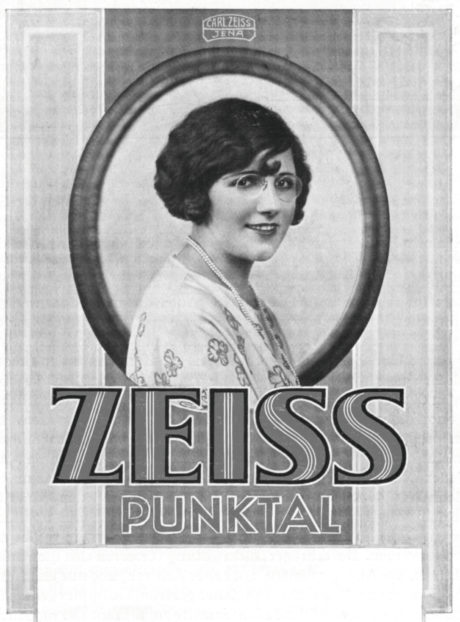
Opticianry, as a profession, has a proud heritage well beyond frame selection and adjustment. Opticians help people see. The advances in technological developments from the 1880s to present have propelled the vision field forward allowing eye care professionals to provide powerful and personalized vision solutions for today’s patients.
The Beginning of Modern Ophthalmic Optics
in 1804, the study of creating lenses with a better image quality was contrived by Dr. William Wollaston. He published a paper on how a meniscus lens would bend light so that it improved the optics in the periphery vs. other lens form such as a bi-convex.
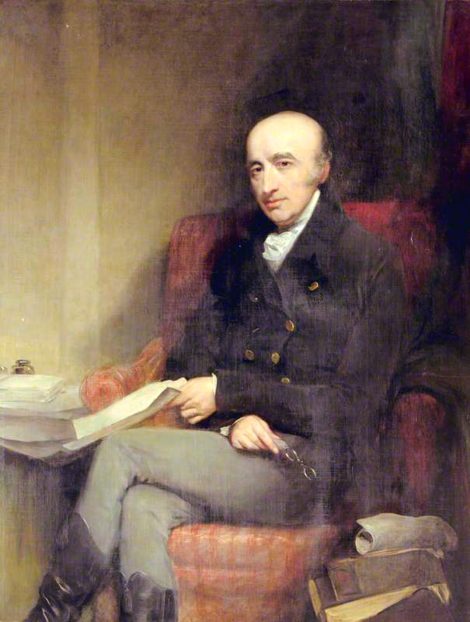
Unfortunately, progress was stagnant from then until 1898, when an ophthalmologist named Franz Ostwalkt was able to mathematically prove Wollaston’s theory, that oblique astigmatism could be corrected in the power range of -22.00 to a +7.00. In 1899, Marius Tscherning laboriously recalculated Ostwalt’s formulas to account for lens thickness. Tscherning’s ellipse is the basis for corrected curve theory that has been used to determine base curves until the invention of freeform lens production.
Correction for Aberrations in the Periphery
The work from Tscherning and those before him helped Moritz von Rohr, a mathematician in the microscopy department of ZEISS, establish a dedicated laboratory for spectacle lenses from which he created the Katral and Punktal lenses. The Katral lens was for aphakic individuals who became extremely hyperopic when the crystalline lens was removed. The Punktal was the first point focal lens, allowing the wearer to see clearly in the periphery, which was unheard of in mass-produced spectacles produces before 1912.
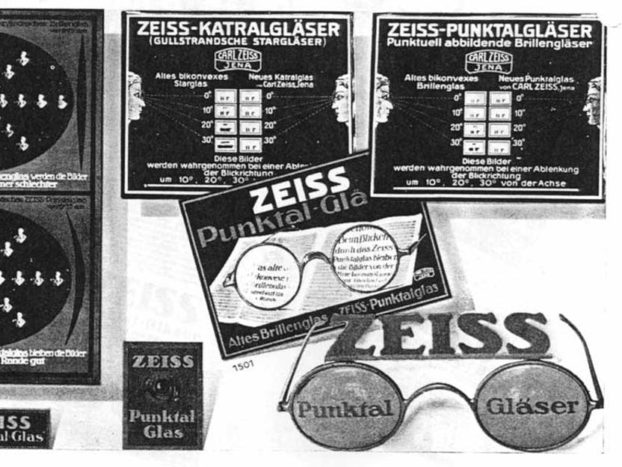
Due to the technical nature of producing and dispensing the Punktal, the Carl ZEISS Foundation proposed to the German Association of Opthalmic Opticians that a special school be setup, leading to the German School of Opticians opening its doors in 1921.
Progressive Lenses
Dr. Estelle Glancy, released a patent for a progressive lens in 1924 and is considered the first woman of Optics.
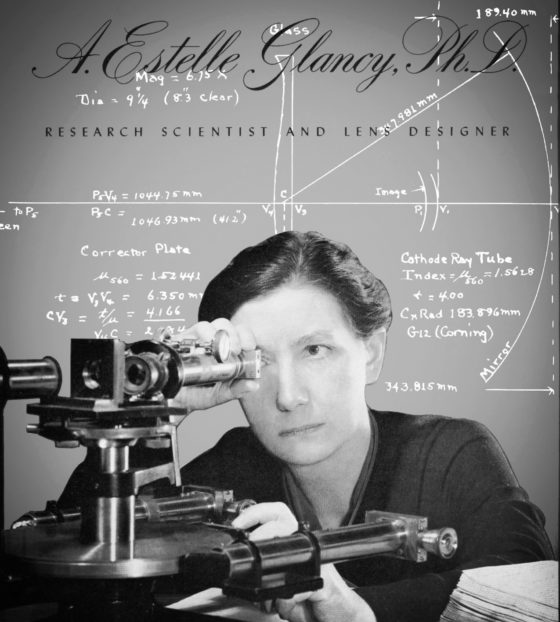
Although progressives continued to move forward, they did not achieve commercial success until 1959, when Bernard Maitenaz of Siciete des Lunetiers (merged with Essel and Silor to become Essilor) created the first commercially available Progressive in Europe.
A major breakthrough was the patent of horizontal symmetry in 1983 by Gerhard Furter of ZEISS. Prior to 1983, both the right and left lens were symmetrical; however, since our eyes are not equal there were different levels in clarity when the prescriptions were different. Horizontal Symmetry created the right and left lens with equal prism and astigmatic power in the lateral portions of the progressive, making them easier to get used to.
Tailor-made Spectacle Lenses
Many companies understood the importance of creating a progressive lens that had optimized parameters for the wearer’s eyes. In the early 80s computer technology was finally able to calculate the spline functions with individual data points, however, these calculations had to constantly be repeated to determine the optimal tolerance in the generating and polishing of the lenses.
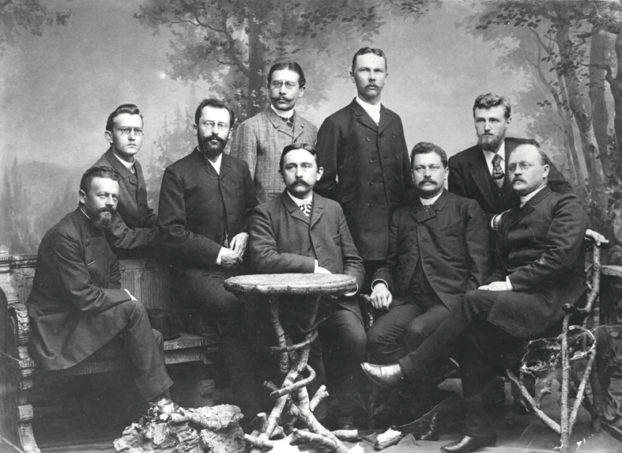
In the early 90s it became possible to produce customizable lenses with the aid of CNC machines. A current lens designer at ZEISS, Helmut Wietschorke, was instrumental in his development of an algorithm that could function independently for any ordered values.
The race to develop a customized progressive commenced in 2000 between Rodenstock and ZEISS. Rodenstock did develop the first free-form lens by just a few days, however, ZEISS was able to secure a patent on free-form production for a backside progressive made from a spherical front surface.
Ophthalmic Treatments
While serving in the military, Alexander Smakula, a physicist and lab manager at ZEISS, noticed reflections from riflescopes and periscopes. To solve the ‘blinking’ from these, he knew he could cancel each wave by changing the reflecting wavelength, known today as destructive interference. A coating, made from magnesium fluoride was patented in 1939, but not used until 1959, when ZEISS was able to apply the coating to an ophthalmic lens.
In 1983, American Optical launched the first plastic photochromic lens, called Photolite.
Key milestones in Ophthalmic Optics lens technology and the organizations that discovered/invented them.
While the list is not exhaustive, it hits many developments since the 19th century up to modern ophthalmic optics. Hopefully, it provides us with a greater appreciation for the lenses we dispense.
1886 – Ernst Abbe of ZEISS calculates the Abbe Value of optical clarity.
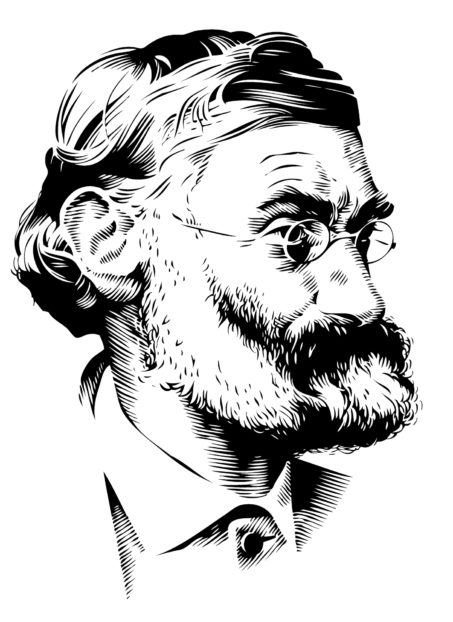
1889 – Carl Zeiss Foundation is founded by Ernst Abbe, 43 years after the Carl Zeiss company’s start and one year after Carl Zeiss death. Thus begins ZEISS as a fully foundation-owned company that reinvest profits into research and development and humanitarian efforts rather than distributing to shareholders.
1898 – Rodenstock of Germany produces the first prescription sunglasses with UV protection.
1908 – Moritz von Rohr calculated the first magnifying visual aid using the Gullstrand imaging theory of image formation: telescopic glasses.
1911 – Invention of the slit lamp by Allvar Gullstrand and Moritz von Rohr
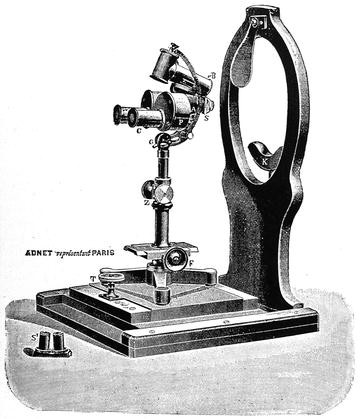
1912 – This is a pivotal year in modern Rx lenses. 1912 is the year that lenses changed from an artisanal craft, with very little optical clarity when the gaze turned away from the lens optical center, to a precision-based process of making focal point lenses, with groundbreaking improvement in clarity away from the optical center. The ZEISS Punktal lens that launched that year best illustrates this breakthrough improvement in ophthalmic lens peripheral optics. However, there was a long buildup of science and engineering before that date to make the breakthrough happen. At the time, organizations were more akin to jewelers, created ophthalmic lenses. While the craft demonstrated great attention to detail, it was science and engineering that advanced ophthalmic optics. In sharp contrast, the ZEISS Punktal was created by a legacy of science and engineering. Steeped in the science of lens optics, the early days of ZEISS included contributions from Carl Zeiss, who started the company in scientific microscopes. Ernst Abbe, a physicist who created the Abbe Value of optical clarity, also formed the Carl Zeiss Foundation, precision glassmaker Otto Schott, and Ophthalmology professor Allvar Gullstrand, who launched the first slit lamp in 1911. This legacy and collaboration led Carl Zeiss scientist Moritz Von Rohr to develop the ZEISS Punktal, a culmination of scientific optical theory and engineering manufacturing. Both Von Rohr and Gullstrand received the Nobel Prize for these contributions. Punktal was so influential that its name was etched into the glass, making it the first branded ophthalmic lens. Its name was used continuously until 2012, making it the longest surviving lens trademark in the world. The invention of Punktal also marks the beginning of the Vision Care business unit at ZEISS. Another fun fact is that before Punktal, Von Rohr invented the ZEISS Katral lens (1903) specifically for post-cataract surgery patients. They were worn by the famous impressionist Claude Monet in 1923, leading him to re-paint several of his later works with more vibrant colors.
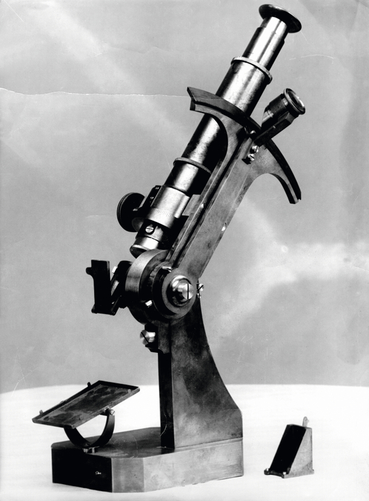
1921 – The launch of the AO Lensometer from American Optical (now part of ZEISS Vision Care).
ZEISS’ foundation structure enables the investment to create the German School of Opticians, the first of its kind in Germany, to aid both patients and train additional technical specialists needed in the growing vision care manufacturing industry.
1924 – Estelle Glancy of American Optical (now part of ZEISS Vision Care) invents and patents many of the mathematical calculations necessary to create today’s progressive lenses. Still, some gaps remained before such lenses could become commercially viable. Estelle was the first woman in optics research.
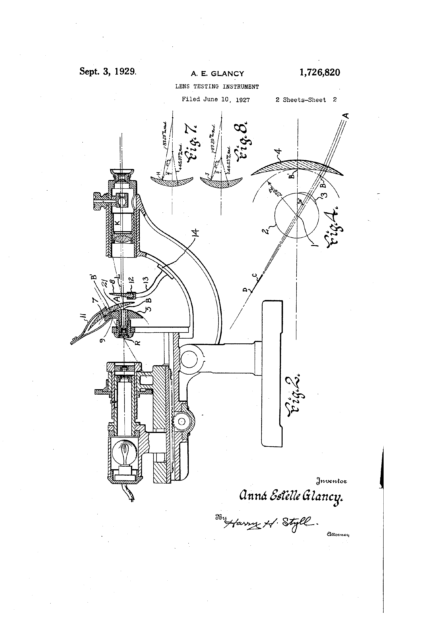
1925 – Tillyer lens. Patent issued the first lens to correct astigmatism and power at American Optical (now part of ZEISS Vision Care). An invention very similar to the Punktal lens created in 1912.
1931 – Aviation goggle patent awarded to American Optical (now part of ZEISS Vision Care). Estelle Glancy and Edgar Tillyer discovered highly wrapped lenses needed prism compensation, since pilots were experiencing headaches with their goggles. This became the technical basis for plano wrap sunglasses such as those popularized by Oakley.
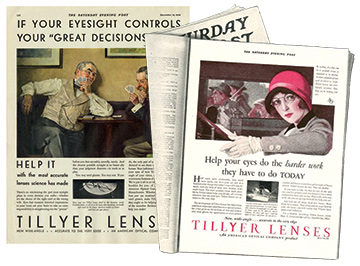
1935 – Carl Zeiss patents the invention of the coating procedure for glass surfaces to reduce reflections.
1939 – (other sources say 1935). Physicist Olexander Smakula of ZEISS invented and patented the first ophthalmic anti-reflective coating. Smakula later went on to be a professor of physics at MIT.
1945 – PPG develops CR-39 monomer, the first plastic resin to be used in the manufacture of ophthalmic lenses.
1949 – ZEISS creates the bifocal Duopal, the first to incorporate physiological visual conditions in the design.
1950 – Donald Stookey of Corning awarded the patent for photochromic glass. Stookey also is credited with creating Corning Ware.
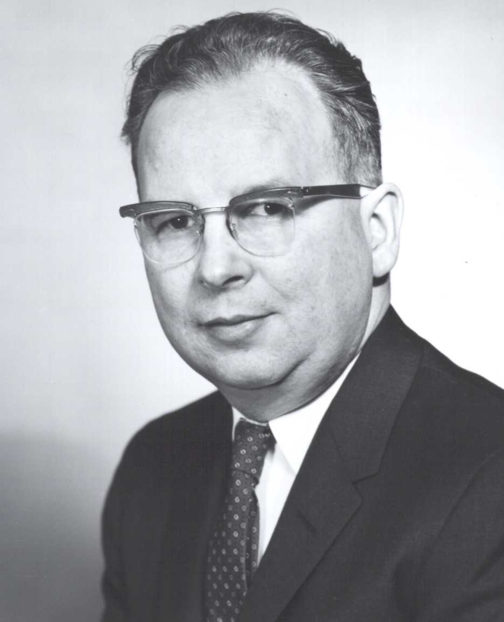
1959 – AR coatings. ZEISS was the first to apply AR coatings commercially to ophthalmic lenses roughly 20 years after AR’s invention.
1959 – Progressive lens technology: The first use of the term “progressive” for ophthalmic lenses in a patent by Ernst Lau and Rolf Riekher at the Institute for Optics and Spectroscopy at the German Academy of Sciences. During this time, they are joined by Guenter Minkwitz, who developed the Minkwitz theorem, which was the next mathematical basis needed to create progressive lenses. The Minkwitz theorem explains why the lateral spherocylindrical distortion or power errors in a progressive lens increase proportionately to the addition power and corridor length.
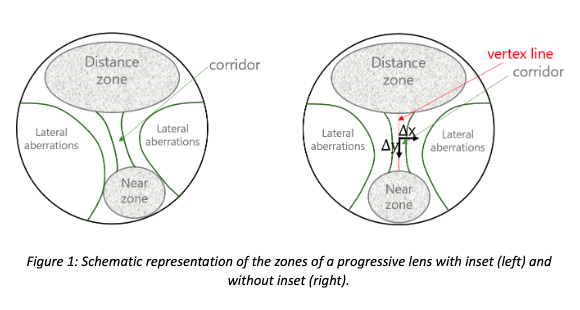
– Building on the discoveries of Aves, Glancy, Lau, Riekher, Minkowitz, and others, French engineer Bernard Maitenaz creates Varilux, the first commercially viable progressive lens. The French Optical company SL eventually becomes the “Essi” in “Essilor” after the merge with LOR, now part of EssilorLuxottica.
– Orma 1000, the first plastic lens, is launched, today known more commonly as CR39 a trade-marked material from PPG Industries, made lenses much lighter-weight than glass while providing good optical clarity. Orma 1000 was launched by LOR, which eventually became the “lor” in Essilor, now EssilorLuxottica.
1976 – Varilux launches the first progressive lens in Orma (CR39).
1980 – Permalite – the world’s first tintable abrasion-resistant coating, developed by American Optical (now ZEISS Vision Care).
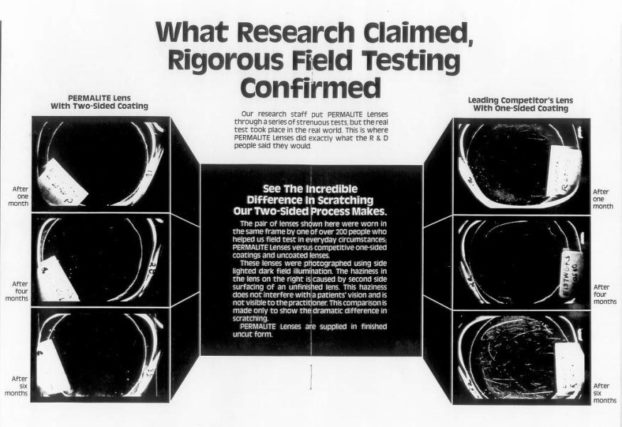
1983 – Photochromic. American Optical, now a part of ZEISS Vision Care, launches the first plastic photochromic called Photolite.
1983 – Progressives: ZEISS Vision Care received the patent for horizontal symmetry in progressive lenses and launched in their lens Gradal HS. Horizonal
1991 – Photochromic. PPG and Essilor jointly create Transitions, a lens that darks based on the intensity of light.
1992 – ZEISS creates the world’s first computer-aided centration device, the ZEISS Video Infral.
1995 – Compensated Rx. ZEISS Vision Care invents the compensated Rx, which gives patients even clearer vision by modifying the prescription to align with the patient’s actual experienced vision through most all of the lens, rather than what may be measured only through the optical center by a lensometer.
1996 – Backside-only freeform or “digitally” surfaced lenses are invented and patented by ZEISS Vision Care. The backside freeform patent was awarded to Dr. Albrecht Hof and Adalbert Hanssen of ZEISS. Considered the gold standard for producing freeform eyeglass lenses, it efficiently minimizes the alignment errors typical between the back (Rx surfacing) and the front surface (progressive lens design). The patent only recently expired.

1997 – VSP founds Sight for Students
1998 – First progressive for small frames: AO Compact by SOLA (now part of ZEISS Vision Care).
2000 – Gradal Individual – the first completely Rx compensated backside freeform lens accounts for back vertex distance, pantoscopic tilt, and wrap angle measurements.
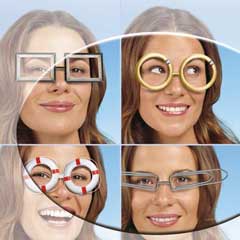
2007 – i.Scription – ZEISS launches the world’s first combination of subjective refraction and wavefront measurement, enabling lens prescriptions up to 100th of a diopter.
2007 – Essilor founded the Essilor Vision Foundation
2013 – Essilor founded the Vision Impact Institute
2015 – Essilor founded Vision For Life
2017 – EssilorLuxottica’s launches “RB” engraving on Ray-Ban prescription lenses, to help offset the loss of the Ray-Ban lettering on the plano sunglass lenses after the prescription is made.
2018 – With ZEISS’ launch of ZEISS UVProtect, UV protection in clear lenses is now on par with sunglass standards, protecting against UV up to 400nm without a perceptible difference in color of the lenses.
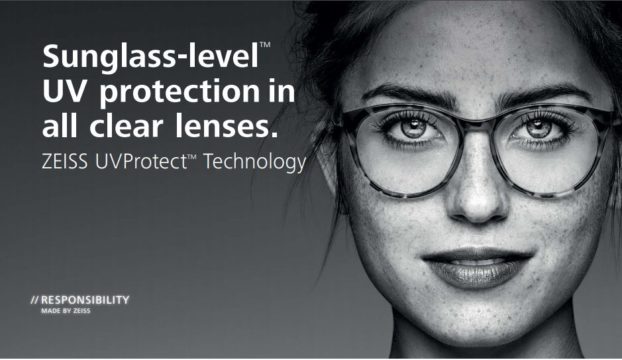
2019 – ZEISS launches its “ZEISS Shield” lens branding in the upper corner of each prescription lens. Unlike the semi-visible engravings, which are primarily for the optician, this engraving is subtly visible, without interfering with vision. It is designed to show patients that their lenses are premium and not a commodity, and to help opticians better explain the value of the lenses to patients. This is a continuation of ZEISS’ innovation of lens branding with the Punktal lenses in 1912.
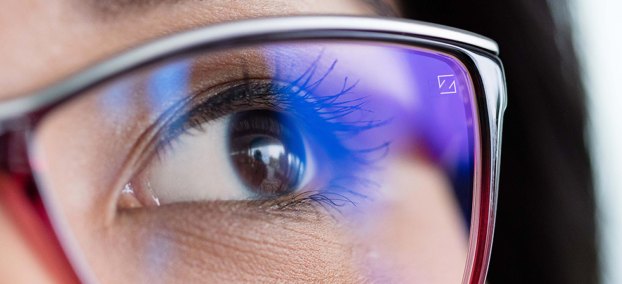
2020 – UVClean – world’s first optometry-focused UVC frame cleaning system from ZEISS. With 99.5% disinfecting effectiveness, it is designed to help ECPs thoroughly and quickly clean frames after the COVID-19 pandemic, helping them spend more time with patients while also giving patients confidence in the hygiene of the practice.
Advances in vision correction have real consequences for the quality of life of Ametropes and Presbyopes. Companies who provide these products have invested heavily in time and money in groundbreaking scientific research. As a result, patients’ vision correction has vastly improved in the last 100 years, even more than 1,000 years prior. Like the calling opticians feel to provide optimal vision correction for patients, it is the philanthropy of companies and scientific calling to make the world a better place through better vision. This effort includes the formation of foundations to help with underserved people’s vision needs, as with VSP and Essilor. Entirely holistic foundation ownership like that of the ZEISS Foundation uses profits to fund the advancement of ophthalmic science and humanitarian causes.
Earn CE Credits
You can earn CE credits on topics like this and many others.
Click Here to find out how.
ZEISS heritage shows how science and passion make better vision for everyone. From old lenses to today’s tech, it’s inspiring. I’d love to share this story on Instagram with friends and followers.
https://weedconsultantsllc.shop/